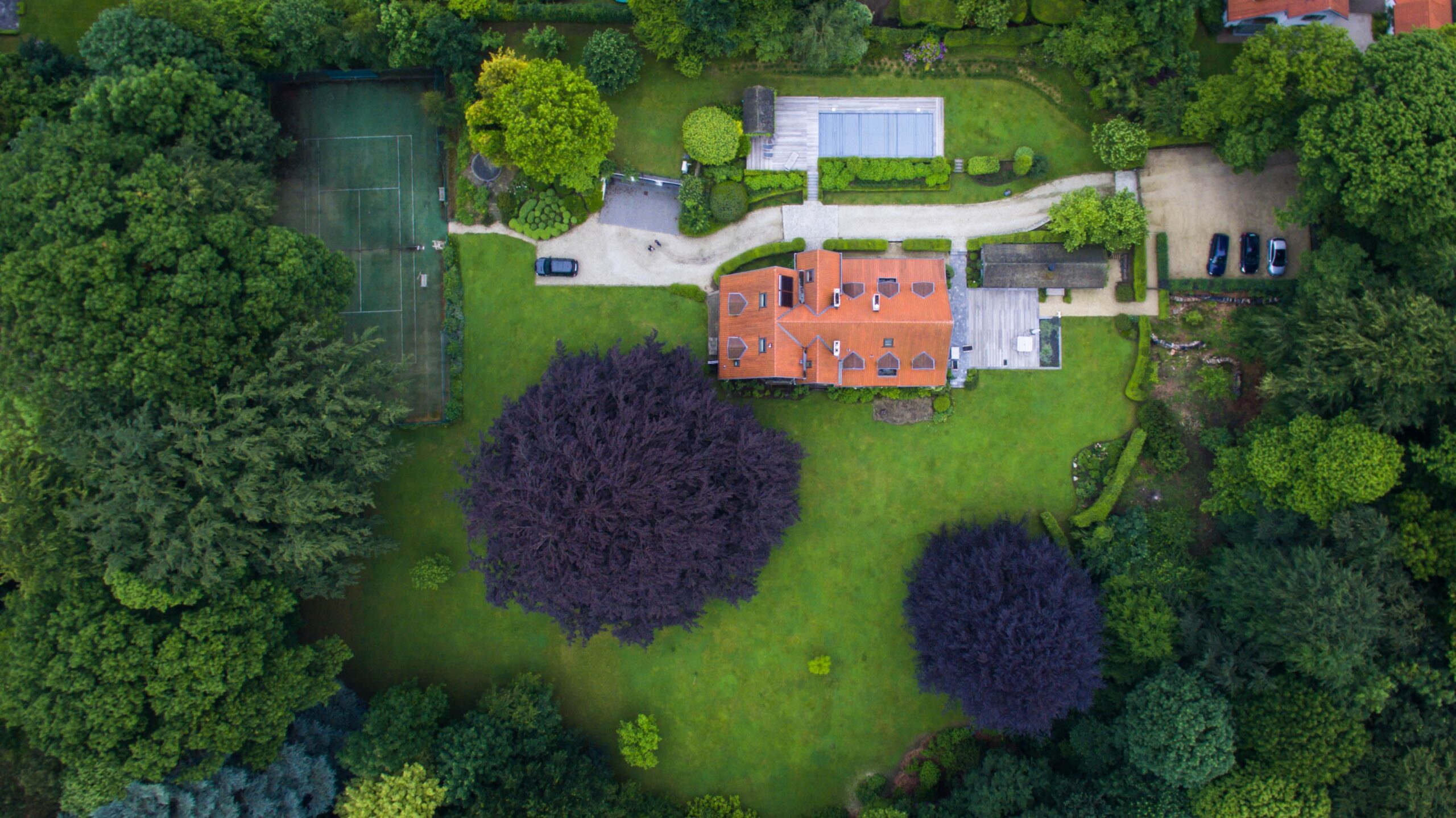In the world of swimming pools, pool coping serves as both a functional and aesthetic feature. It not only protects the pool's edge from damage but also enhances its overall appearance.
With an array of coping materials available, such as bricks, concrete pavers, natural stone, and composite materials, choosing the right one can be a daunting task.
In this comprehensive guide, we will explore different pool coping types, design ideas, and address common questions to help you make informed decisions about your pool's edge.
Key Takeaways
- Pool coping is an essential safety measure for swimmers and protects the top edge of the pool from damage.
- There are various types of coping materials available, including bricks, concrete pavers, natural stone, and composite materials.
- When choosing coping, it is important to consider safety, aesthetics, cost, longevity, and salt resistance for saltwater pools.
- The cost of pool coping varies based on pool size and material used, with poured concrete being the cheapest option and natural stone coping being more expensive.
Pool Coping Overview and Benefits
Pool coping is an essential safety feature for swimmers, providing a small overhang and a rough surface to prevent slipping and ensure grip. It surrounds the edge of the pool, protecting the top edge from damage and completing the aesthetic of an inground pool. Pool coping is not only a safety measure but also a way to enhance the overall look of the pool, offering an attractive finish. It provides extra traction, making it safer for people to enter the pool, especially when the surface is wet.
Moreover, pool coping prevents damage to the pool itself, reducing the risk of cracks. It serves as a barrier that protects the vulnerable areas of the pool, such as the top edge, from wear and tear. By doing so, pool coping prolongs the lifespan of the pool and minimizes the need for repairs.
In addition to its functional benefits, pool coping also adds to the visual appeal of the pool area. It comes in various materials, such as bricks, concrete pavers, natural stone, and composite materials, each offering different aesthetics and durability. Choosing the right coping material is important, considering factors such as safety, cost, longevity, and salt resistance for saltwater pools.
Now that we have discussed the overview and benefits of pool coping, let's delve into the different types of coping materials available and their unique characteristics.
Types of Coping Materials
When it comes to choosing the right coping material for your pool, there are several factors to consider.
Firstly, you need to decide between brick and stone coping. Brick coping is affordable and versatile, making it a popular choice for many pool owners. On the other hand, natural stone coping provides a more natural aesthetic and increased durability.
Secondly, you should consider the cost and durability of each material. Brick coping is generally more cost-effective, making it an attractive option for those on a budget. Natural stone coping, although more expensive, offers greater durability and longevity.
Understanding the pros and cons of each material will help you make an informed decision that meets your needs and preferences.
Brick Vs. Stone
When considering coping materials for pool installations, the choice between brick and stone is a common consideration due to the unique qualities each material offers.
- Brick: Brick coping is affordable, versatile, and durable. It adds a timeless and classic look to the pool area. It comes in a variety of colors and styles, allowing for customization to match any design aesthetic.
- Stone: Stone coping provides a natural aesthetic and durability. It offers a range of options, including limestone, travertine, and granite, each with its own unique characteristics. Stone coping adds a luxurious and elegant touch to the pool area.
The decision between brick and stone coping ultimately depends on personal preferences, budget, and the desired look for the pool area.
Now let's explore the cost vs. durability aspect of these materials.
Cost Vs. Durability?
The cost versus durability aspect of different types of coping materials must be considered when choosing the ideal option for pool installations. There are various pool coping options available, each with its own level of durability and cost.
- Bricks are an affordable and versatile choice that can withstand the test of time.
- Concrete pavers require minimal maintenance and can last as long as the pool itself.
- Natural stone provides a beautiful aesthetic and exceptional durability.
- Composite materials offer a smoother surface and greater strength compared to concrete pavers.
It is essential to weigh the cost and durability of each material to ensure the best choice for your pool. Considering these factors will help you make an informed decision when choosing coping materials for your pool installation.
Now, let's explore the considerations when choosing coping for your pool.
Considerations When Choosing Coping
One important consideration when choosing coping for your pool is the safety it provides, ensuring a secure grip to prevent slips. This is crucial to protect swimmers and minimize the risk of accidents.
In addition to safety, there are several other factors to consider when making your coping selection. Here are three key considerations:
- Aesthetic Considerations: The coping you choose should complement the overall design of your pool and blend well with your yard. It should enhance the visual appeal of your pool area and create a cohesive look. Consider the color, texture, and style of the coping to ensure it aligns with your aesthetic preferences.
- Cost: Budget is an important factor to consider when choosing coping. Different materials have varying price points, so it's essential to determine how much you are willing to spend. Keep in mind that while some options may be more expensive initially, they may offer greater durability and require less maintenance, ultimately saving you money in the long run.
- Longevity: The coping you select should be able to withstand exposure to chemicals and water, ensuring it remains in good condition over time. Consider the durability and lifespan of different materials to make an informed decision. Additionally, if you have a saltwater pool, it's important to choose coping that is resistant to salt corrosion.
Average Cost of Pool Coping
The average cost of pool coping varies depending on the size of the pool and the material chosen. When considering pool coping types, it is important to take into account the budget and desired aesthetic.
Poured concrete is the most affordable option for pool coping, making it a popular choice among homeowners. It offers a clean and modern look to the pool area and can be customized to match various pool designs. Concrete pavers and composite materials are also reasonably priced options that provide durability and a smooth surface.
Brick coping is another affordable and versatile choice. It adds a classic and timeless look to the pool area and can be easily matched with different architectural styles.
On the higher end of the price spectrum is natural stone coping. While it comes with a higher price tag, it offers a natural aesthetic and exceptional durability. Natural stone coping can enhance the overall look of the pool, providing an attractive finish.
When determining the cost of pool coping, it is essential to consider factors such as the size of the pool, the complexity of the installation, and any additional features or customization. It is recommended to consult with a professional to get an accurate estimate based on individual needs and preferences.
Pool Design Options
When considering pool design options, it is important to explore different ways to incorporate the natural landscape and create a visually pleasing environment around the pool. Here are three pool design options that can enhance the overall aesthetic appeal of your pool area:
- Using the Natural Landscape: Pool owners can create a natural look by highlighting tropical plants and other landscaping elements. Adding a retaining wall with plants against one edge of the pool can enhance the natural appeal. Incorporating plants and greenery not only adds aesthetic appeal but also creates a visually pleasing environment that can evoke a relaxing and calming atmosphere.
- Poured Concrete: Concrete is a popular choice for pool coping due to its affordability, versatility, and easy installation. It can be customized to match various pool designs and provides a clean and modern look to the pool area. The durability of concrete makes it a long-lasting choice for pool coping, ensuring it withstands exposure to chemicals and water.
- Timber Decking: Hardwood timber decking adds a luxurious and comforting touch to the pool area. For a low-maintenance alternative, composite decking with a natural design can be used. However, it's important to note that timber decking requires regular upkeep and maintenance, while composite decking is more resistant to the elements. Using timber decking creates a warm and inviting atmosphere around the pool.
Using the Natural Landscape
To create a natural and visually pleasing pool area, incorporate the surrounding landscape by highlighting tropical plants and other landscaping elements. Using the natural landscape in pool design is a popular choice for homeowners who want to create an organic and harmonious environment. By integrating the natural elements into the pool area, you can enhance the overall aesthetic appeal and create a relaxing atmosphere.
One way to incorporate the natural landscape is by adding a retaining wall with plants against one edge of the pool. This not only enhances the natural appeal but also provides a sense of privacy and enclosure. Additionally, incorporating plants and greenery throughout the pool area can create a visually pleasing environment, making it feel like an oasis.
By using the natural landscape, you can create a seamless transition between the pool and its surroundings. This integration can be achieved by choosing pool coping materials that complement the natural elements. For example, using natural stone coping can enhance the aesthetic appeal and durability of the pool area.
Incorporating the natural landscape into your pool design can also create a relaxing and calming atmosphere. The presence of plants and greenery can help to soften the overall look of the pool area and provide a sense of tranquility. Additionally, the natural landscape can provide shade and privacy, making it a more enjoyable space for swimming and lounging.
In conclusion, using the natural landscape in pool design is a great way to create a visually pleasing and relaxing environment. By incorporating tropical plants and other landscaping elements, you can enhance the overall aesthetic appeal and create a seamless transition between the pool and its surroundings.
Next, let's explore the option of poured concrete for pool coping.
Poured Concrete
Poured concrete is a commonly chosen option for pool coping due to its affordability and versatility. It offers several advantages for pool owners looking to enhance the functionality and aesthetics of their pool area.
Here are three key reasons why poured concrete is a popular choice:
- Affordability: Poured concrete is a cost-effective option for pool coping. It is typically less expensive than other materials like natural stone or brick. This makes it an attractive choice for those on a budget or looking to save on their pool construction or renovation costs.
- Customizability: Poured concrete can be easily customized to match various pool designs. It can be shaped and molded into different styles and sizes to suit individual preferences. Additionally, it can be colored or stained to create a unique and personalized look for the pool area.
- Durability: Poured concrete is known for its durability and longevity. It can withstand exposure to chemicals, water, and varying weather conditions without losing its structural integrity. This makes it a reliable option for pool coping that will require minimal maintenance and repairs over time.
With its affordability, customizability, and durability, poured concrete is a practical and versatile choice for pool coping. Pool owners can enjoy a functional and visually appealing pool area without breaking the bank. Whether it's a new pool construction or a pool renovation project, poured concrete can provide a clean and modern look that enhances the overall aesthetics and value of the pool.
Timber Decking
When considering timber decking for pool coping, it is important to understand the maintenance requirements associated with this material.
Timber decking requires regular upkeep and maintenance to ensure its longevity and appearance.
Additionally, it is necessary to consider the sustainability of timber decking and compare it to composite alternatives, which offer low-maintenance options with a natural design.
Maintenance of Timber Decking
Maintenance of timber decking for pool coping is essential to ensure its longevity and aesthetic appeal. Proper maintenance not only preserves the natural beauty of the timber but also ensures the safety of pool users. Here are three important maintenance tips for timber decking:
- Regular cleaning: Timber decking should be regularly cleaned to remove dirt, debris, and algae growth. A gentle scrub with a mild detergent and water solution can help to maintain its original color and prevent slippery surfaces.
- Sealing: Applying a high-quality sealer to the timber decking helps to protect it from moisture, UV rays, and fungal growth. This also enhances its durability and prevents warping or cracking.
- Inspections and repairs: Regular inspections should be conducted to identify any signs of damage or wear. Any loose boards, splintering, or rotting should be repaired or replaced promptly to maintain the stability and safety of the pool edge design.
Sustainability of Timber Decking
Timber decking offers a sustainable pool coping solution due to its renewable and eco-friendly nature. Timber is a natural material that can be sourced from responsibly managed forests, making it a more sustainable choice compared to other materials.
It is also biodegradable and can be easily recycled at the end of its lifespan, reducing its environmental impact. Additionally, timber decking has a lower carbon footprint compared to materials like concrete or composite decking.
By choosing timber decking for pool coping, homeowners can contribute to the sustainability of their pool area while enjoying the natural beauty and warmth that timber brings.
In the next section, we will compare timber decking to composite decking, exploring the pros and cons of each option.
Comparison: Timber Vs. Composite
The comparison between timber and composite materials for pool decking offers valuable insights for homeowners. When choosing between these two coping materials, there are several factors to consider:
- Durability: Timber decking requires regular upkeep and maintenance to prevent rotting, warping, and insect infestation. On the other hand, composite decking is more resistant to the elements and does not require as much maintenance.
- Aesthetics: Timber decking adds a luxurious and comforting touch to the pool area, creating a warm and inviting atmosphere. Composite decking offers a low-maintenance alternative with a natural design that mimics the look of timber.
- Longevity: Timber decking has a limited lifespan and may need to be replaced more frequently. Composite decking, on the other hand, is known for its durability and can last for many years.
Considering these factors will help homeowners make an informed decision when choosing between timber and composite decking for their pool coping materials.
Extending Your Pool Deck
One consideration when extending a pool deck is determining the desired length of the deck around the pool. This will depend on factors such as the size of the pool, the available space, and the intended use of the deck. Extending the pool deck can offer several benefits, including creating a larger area for lounging and entertaining, providing additional space for furniture or equipment, and enhancing the overall aesthetics of the pool area.
When extending your pool deck, it is important to consider the types of pool coping that will be used. Pool coping not only provides a finished edge to the deck but also serves as a protective barrier for the pool structure. There are various types of pool coping materials to choose from, including bricks, concrete pavers, natural stone, and composite materials. Each material has its own unique characteristics and advantages, so it is important to select one that suits your specific needs and preferences.
Additionally, when extending your pool deck, it is crucial to consider the weight of the deck material and the required support structure. The material chosen for the deck will determine the maintenance needs, durability, and overall lifespan of the extended deck. It is advisable to seek professional advice to ensure that the deck extension is structurally sound and meets safety standards.
Frequently Asked Questions
What Are the Maintenance Requirements for Different Types of Pool Coping Materials?
Maintenance requirements for different types of pool coping materials vary.
Concrete coping requires regular cleaning to remove dirt and debris, and occasional resealing to maintain its appearance and durability.
Brick coping may require occasional replacement of damaged bricks and mortar repair.
Natural stone coping should be sealed regularly to prevent staining and maintain its natural beauty.
Composite materials and concrete pavers generally require minimal maintenance, with periodic cleaning to remove dirt and algae.
It is important to follow manufacturer guidelines for specific maintenance recommendations for each type of coping material.
Can Pool Coping Be Installed on an Existing Pool, or Does It Need to Be Done During the Initial Construction?
Yes, pool coping can be installed on an existing pool or during the initial construction.
Installing pool coping on an existing pool involves removing the old coping and replacing it with the new material. This process requires careful planning and expertise to ensure proper alignment and fit.
It is recommended to consult with a professional pool contractor who can assess the existing pool and provide guidance on the best approach for installing new pool coping.
Are There Any Specific Safety Regulations or Guidelines to Follow When Installing Pool Coping?
When installing pool coping, it is important to follow specific safety regulations and guidelines to ensure the safety of swimmers. These regulations may vary by location, but common guidelines include ensuring the coping provides sufficient grip to prevent slips, and that it is installed securely to protect the vulnerable areas of the pool.
It is recommended to consult with a professional to ensure compliance with local safety regulations and to ensure the proper installation of pool coping.
How Long Does Pool Coping Typically Last Before Needing to Be Replaced?
Pool coping typically lasts for many years before needing to be replaced. The exact lifespan of pool coping depends on various factors, such as the material used, maintenance practices, and exposure to chemicals and water.
High-quality materials like natural stone and composite materials tend to be more durable and long-lasting. Regular cleaning and proper maintenance can also extend the lifespan of pool coping.
It is recommended to consult with a professional to determine the specific lifespan of the chosen coping material.
Can Pool Coping Be Customized to Match the Design and Style of the Pool?
Yes, pool coping can be customized to match the design and style of the pool. This allows homeowners to create a cohesive and personalized look for their pool area.
For example, if the pool has a modern design, the coping can be customized with clean lines and a sleek finish to complement the overall aesthetic.
Similarly, if the pool has a more natural and rustic look, the coping can be designed with natural stone materials to blend seamlessly with the surroundings.




